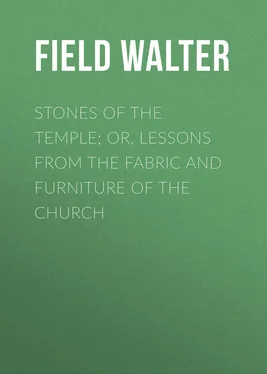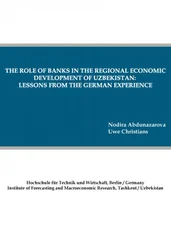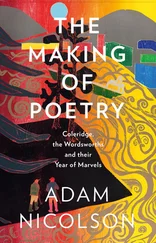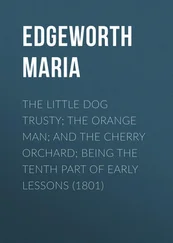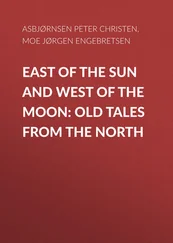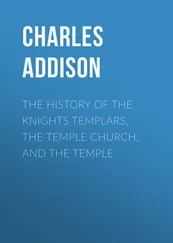Walter Field - Stones of the Temple; Or, Lessons from the Fabric and Furniture of the Church
Здесь есть возможность читать онлайн «Walter Field - Stones of the Temple; Or, Lessons from the Fabric and Furniture of the Church» — ознакомительный отрывок электронной книги совершенно бесплатно, а после прочтения отрывка купить полную версию. В некоторых случаях можно слушать аудио, скачать через торрент в формате fb2 и присутствует краткое содержание. Жанр: foreign_religion, Религиозная литература, foreign_antique, foreign_prose, на английском языке. Описание произведения, (предисловие) а так же отзывы посетителей доступны на портале библиотеки ЛибКат.
- Название:Stones of the Temple; Or, Lessons from the Fabric and Furniture of the Church
- Автор:
- Жанр:
- Год:неизвестен
- ISBN:нет данных
- Рейтинг книги:4 / 5. Голосов: 1
-
Избранное:Добавить в избранное
- Отзывы:
-
Ваша оценка:
- 80
- 1
- 2
- 3
- 4
- 5
Stones of the Temple; Or, Lessons from the Fabric and Furniture of the Church: краткое содержание, описание и аннотация
Предлагаем к чтению аннотацию, описание, краткое содержание или предисловие (зависит от того, что написал сам автор книги «Stones of the Temple; Or, Lessons from the Fabric and Furniture of the Church»). Если вы не нашли необходимую информацию о книге — напишите в комментариях, мы постараемся отыскать её.
Stones of the Temple; Or, Lessons from the Fabric and Furniture of the Church — читать онлайн ознакомительный отрывок
Ниже представлен текст книги, разбитый по страницам. Система сохранения места последней прочитанной страницы, позволяет с удобством читать онлайн бесплатно книгу «Stones of the Temple; Or, Lessons from the Fabric and Furniture of the Church», без необходимости каждый раз заново искать на чём Вы остановились. Поставьте закладку, и сможете в любой момент перейти на страницу, на которой закончили чтение.
Интервал:
Закладка:
"I wish Master Ernest could take a picture of good old Sir John, as we call him, Mr. Acres," said Matthew; "I mean him as lies in the chancel, right in front of the altar; but he's cut out in the flat stone, and not in the metal, so I suppose Master Ernest can't do it. I remember the time, sir, when people as were sick and diseased used to come for miles round to lie upon that stone, and they believed it made them much better 41 41 These superstitions existed a few years since in connexion with an old incised slab in the chancel of Christ Church, Caerleon.
; and if they believed it, I dare say it did, sir. And 'tisn't but a very few years back when it would have been thought very unlucky indeed if a corpse had not rested over good Sir John all night before its burial. We still place the coffins just in the same place at the funerals, but of course nobody any longer believes that good Sir John can do good or ill to those inside them."
"I must bring some stronger paper than that I use for the brasses, to copy the stone figure, Matthew," said Ernest; "so that must be done another day."
All said good-bye to the old sexton, and as he wended his way up the narrow stone stairs to his little chamber, Mr. Acres and his family returned to Oakfield Hall.
The dining-room was soon decorated with the trophies of Ernest's four days' labour, and other rubbing's which he had before taken; and when Mr. Ambrose arrived he was met by several eager petitioners, praying him to give some explanation of the strange-looking black and white figures that hung upon the walls.
"It would take me a whole day to tell you all that might be said about them," said he; "but I shall be very glad to give you a short description of each, and I will follow the course which Ernest has evidently intended me to adopt, for I see he has arranged all the bishops and priests together, and the knights, the civilians, and the ladies, each class by itself. But first I must tell you something of the general history of these brass memorials. There are an immense number of them in this country – it is supposed about 4000 – and they are chiefly to be found in Norfolk, Suffolk, Essex, and Kent; but indeed there are comparatively few old churches in England in which you cannot find upon the pavement some traces of these interesting memorials. Though, however, so many remain, probably not less than 20,000 have been either stolen or lost. You will see on the pavement at St. Catherine's, marks of the force which has been used in tearing many from the stones in which they had been firmly fixed."
"But who could have been so fearless and wicked as to take them away?" exclaimed Constance, who already had begun to feel a real interest in the subject.
"Alas! Constance, that question is easily answered. There was indeed a time, long ago, when people would not have dared to commit these acts of sacrilege. You know among the ancient Romans there was a belief that the manes or spirits of the departed protected their tombs, and so persons were afraid to rob them; but people since then have been deterred by no such fear, indeed by no fear at all. Within the period between 1536 and 1540 somewhere about 900 religious houses were destroyed, and their chapels were dismantled and robbed of their tombs, on which were a great number of brasses. And this spirit of sacrilege extended beyond the monasteries, for at this time, and afterwards, very many of our parish churches were also despoiled of their monumental brasses; indeed the evil spread so much that Queen Elizabeth issued a special proclamation for putting a stop to it. The greatest destruction of brasses, however, took place a hundred years after this, when thousands were removed from the cathedrals and churches to satisfy the rapacity or the fanaticism of the Puritan Dissenters, who were then in power 42 42 "In the year 1657, the adherents of a Preacher of the name of Cam obtained the grant of the chancel of the Holy Trinity Church, Hull, from the council of state under the Protectorate, and whilst the mob without were burning the surplice and the Prayer Book, those within were tearing the brasses from the grave-stones." — History of Kingston-upon-Hull. s. d. "1644, April 8th, paid to Master Dowson, that came with the troopers to our church, about the taking down of images and brasses off stones "1644, paid, that day, to others, for taking up the brasses of grave-stones before the Officer Dowson came – Churchwarden's accounts ; Walberswich, Suffolk. "This William Dowing (Dowson), it appears, kept a journal of his ecclesiastical exploits. With reference to the Church of St. Edward's, Cambridge, he says, — "'1643, Jan. 1, Edward's Parish, we digged up the steps, and broke down 40 pictures, and took off ten superstitious inscriptions.' "Mr. Cole, in his MSS., observes, — "'From this last entry we may clearly see to whom we are obliged for the dismantling of almost all the grave-stones that had brasses on them, both in town and country; a sacrilegious, sanctified rascal, that was afraid, or too proud, to call it St. Edward's Church, but not ashamed to rob the dead of their honours, and the church of its ornaments. – W. C.'" — Burn's Parish Registers.
. In later times, I am sorry to say, large numbers have been sold by churchwardens, for the just value of the metal, and many have been removed during the restoration of churches and have not been restored; of course, those whose special duty it was to protect them have been greatly to blame for this. Then not a few have become loose, and been lost through mere carelessness. Some of the most beautiful brasses in our church I discovered a few years since under a heap of rubbish in the wood-house of Daniels, the former sexton 43 43 The very interesting brasses in Chartham Church, Kent, were found a few years since as here described, by the present rector, and replaced by him on the chancel pavement.
. So you see it is no wonder we find so many of those curiously-indented slabs in the pavement of our churches, which mark the places where brasses have formerly been.
A few of these memorials are to be found in Wales, Ireland, and Scotland. Some also exist in France, Germany, Russia, Prussia, Poland, Switzerland, Holland, Denmark, and Sweden. In these countries, however, they have never been numerous.
But now I must say a few words about their origin. The oldest memorials of the dead to be found in our churches are the stone coffin-lids, with plain or floriated crosses carved upon them. The stone coffins were buried just below the level of the pavement, so their lids were even with the floor of the church. Afterwards, similar crosses were graven on slabs of stone above the coffin; then the faces of the deceased were represented; and at length whole figures, and many other devices, were carved on the stone, and around the stone was sometimes an inscription consisting of letters of brass separately inlaid. Then the figures and inscriptions were either altogether made of brass, or were partly graven in stone and partly in brass; specimens of both, I see, Ernest has provided for us. The earliest of these incised slabs are probably of the ninth century, but the faces of the deceased were not carved on them till about 1050. The earliest brass of which we have any account is that of Simon de Beauchamp, 1208; and the most ancient brass figure now remaining is that of Sir John Daubernoun, 1277.
"The form of the brass has evidently been often suggested by the stone and marble effigies we see on altar-tombs. For we find that not only the costume and position of the figures are closely copied, but also the canopies above them, the cushions or helmets on which their heads rest, and the lions, dogs, or other animals on which the feet are placed. I have something more to say on the subject generally, before I come to speak particularly about Ernest's copies; so after the general interval of ten minutes I will resume the subject.
Читать дальшеИнтервал:
Закладка:
Похожие книги на «Stones of the Temple; Or, Lessons from the Fabric and Furniture of the Church»
Представляем Вашему вниманию похожие книги на «Stones of the Temple; Or, Lessons from the Fabric and Furniture of the Church» списком для выбора. Мы отобрали схожую по названию и смыслу литературу в надежде предоставить читателям больше вариантов отыскать новые, интересные, ещё непрочитанные произведения.
Обсуждение, отзывы о книге «Stones of the Temple; Or, Lessons from the Fabric and Furniture of the Church» и просто собственные мнения читателей. Оставьте ваши комментарии, напишите, что Вы думаете о произведении, его смысле или главных героях. Укажите что конкретно понравилось, а что нет, и почему Вы так считаете.
